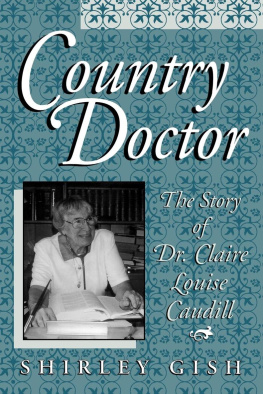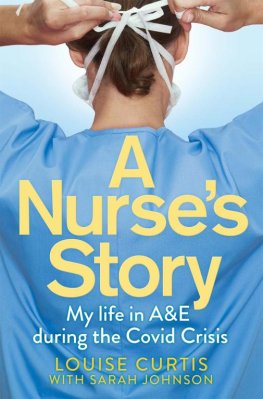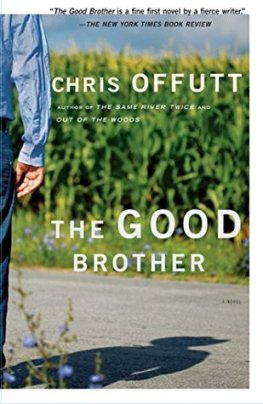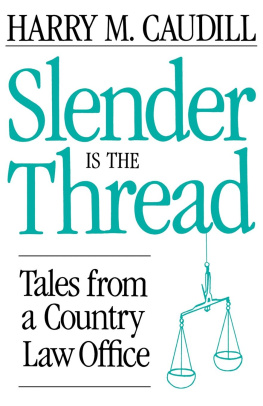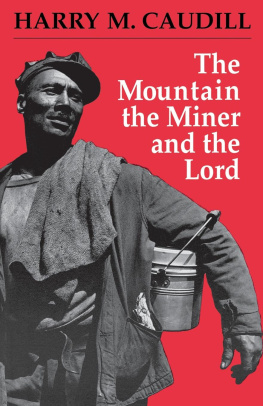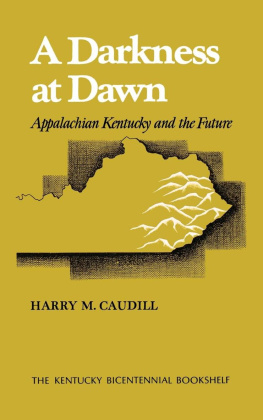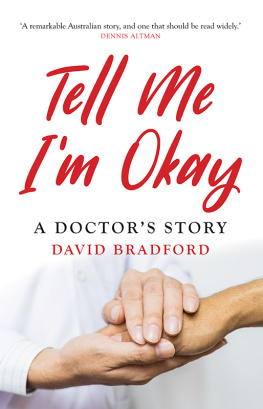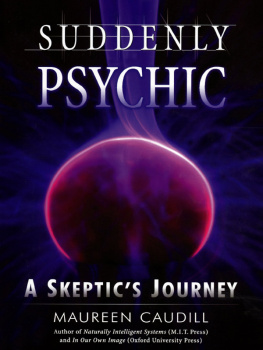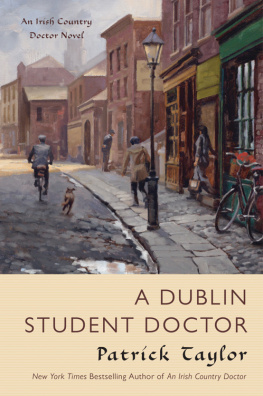Country Doctor
Country Doctor
The Story of
DR. CLAIRE LOUISE CAUDILL
Shirley Gish
Copyright 1999 by The University Press of Kentucky
Paperback edition 2010
Playscript for Me n Susie copyright 1993 by Shirley Gish and Dr. Claire Louise Caudill. This play may not be performed without written permission of the copyright holders.
Scholarly publisher for the Commonwealth,
serving Bellarmine University, Berea College, Centre
College of Kentucky, Eastern Kentucky University,
The Filson Historical Society, Georgetown College,
Kentucky Historical Society, Kentucky State University,
Morehead State University, Murray State University,
Northern Kentucky University, Transylvania University,
University of Kentucky, University of Louisville,
and Western Kentucky University.
All rights reserved.
Editorial and Sales Offices: The University Press of Kentucky
663 South Limestone Street, Lexington, Kentucky 40508-4008
www.kentuckypress.com
The Library of Congress has cataloged the hardcover edition as follows:
Gish, Shirley, 1931
Country doctor: the story of Dr. Claire Louise Caudill / Shirley Gish.
p.cm.
Includes interviews with Caudill and Susie Halbleib and the playscript Me n Susie, by Shirley Gish and Claire Louise Caudill.
ISBN 0-8131-2077-2 (alk. paper)
1. Caudill, Claire LouiseDrama. 2. Caudill, Claire LouiseInterviews. 3. Women physiciansKentuckyDrama. 4. Women physiciansKentuckyInterviews. 5. Country lifeKentuckyDrama. I. Caudill, Claire Louise. II. Halbleib, Susie. III.
Gish, Shirley, 1931 Me n Susie. IV. Title.
PS3557.I793C681999
812.54dc2198-20274
ISBN 13: 978-0-8131-2973-0 (pbk.: alk. paper)
This book is printed on acid-free recycled paper meeting
the requirements of the American National Standard
for Permanence in Paper for Printed Library Materials.
Manufactured in the United States of America.
| Member of the Association of
American University Presses |
For Melissa
Contents
Illustrations follow
History is what people have said to me,
and what Ive heard, that I must write down.
Herodotus
Foreword
John Kleber
In the mountains of eastern Kentucky, a story is told about Alice Lloyd, scion of a wealthy Massachusetts family, that when she thought of leaving her work in the Caney Creek area of Knott County, an elderly woman said, Stay on, stranger. And stay she did, for more than forty years, to improve the lives of the people. No one had to ask Claire Louise Caudill to stay. Her roots were firmly planted in Rowan County, Kentucky. Although she went away to study medicine, after she returned with her degree in 1946, she never thought of leaving.
Dr. Caudill had a calling. Frederick Buechner has identified a calling as the place where ones personal happiness intersects with the worlds great needs. In the ensuing years, Dr. Caudill found much happiness in meeting the needs of local people. Among other things, she delivered more than eight thousand babies. Similarly, Susie Halbleib, a Louisville native, found her calling working beside Caudill as nurse and friend. Together they demonstrated that individuals can make a difference for the better.
Another woman must be mentioned, and that is Shirley Gish. The mountains of eastern Kentucky are replete with a chorus of women who have helped to mitigate the violence, isolation, and deprivations of a rugged land of strong values where the outside is suspect. Gish came to Rowan County and soon felt a kind of calling to understand why Caudill was so special. The results can be found in the following pages. In the end, Gish was both inspired and enlightened, but no closer to understanding what made this remarkable woman do what she did.
In the movie Casablanca, Rick, commenting on the work of Victor Laslow, notes that while many try, he has succeeded. Like Laslow, Caudill is a heroic figure who has succeeded in nearly all she has undertaken. It is seen in the health of her patients. It is reflected in the large hospital that sits west of Moreheads downtown, and it can be read about in James McConkeys Rowans Progress. But Gishs work adds more because here Dr. Caudill speaks for herself. Here, also, some of her many friends give testimony to the fact that, like Laslow, hers was the heroism of persistency.
For all of its excellence, Rowans Progress was Dr. Caudill seen through the eyes of another. The play Me n Susie is different. When Gish decided she wanted to know what made Caudill and Halblieb so special, she employed the technique of oral history. Both women modestly objected that they had nothing to say, but the series of interviews found here says otherwise. They convey a modesty and wisdom that reflect a true calling. To round out the picture, Gish interviewed seven local people. The result is a valuable primary resource for those interested in a history of rural medicine and womens role in it. It also became the story of a whole town.
For Gish, it offered a technique known to Saroyan, Miller, and ONeill, namely, to take true people and dramatize them. When Gish first met Caudill, she felt an overwhelming need to know her. But simple acquaintance was insufficient. Gish is an actress and playwright who knows that the theatre can be a teaching tool and that good drama is a great moral force. The portrayal of Caudill as a strong and independent person can reach and inspire young women to think of their potential. The history of Eastern Kentucky is resplendent with strong women who have served as role models in a society that tends to be male dominated and often repressive. With the meeting of Gish and Caudill, the one has brought the other to life in a way only the theatre can do. Doubtless her two presentations of this play did have their impact. One can see how it would inspire others to pursue a life of rural medicine.
Although Gishs play imparts the power of drama, it reflects its weakness as well. Only a small number will ever see this play. For that reason, Gish chose to publish the script with the transcripts of the oral history interviews. In this manner Caudills inspiration will reach many more. She can now touch other lives beyond the footlights. In a way, she will always be with us, conveying the true humanity of medicine. Gishs book is also a tome for the oral historian. It shows another way the technique can be most useful. Rather than having the tapes relegated to some musty repository, the printed words tell us here that in the act of common duty lies the heroic.
Acknowledgments
I would like to thank the following, whom I now count as friends, whose great kindness made it possible to complete the play Me n Susie and this collection of oral histories: first and foremost, Dr. Claire Louise Caudill and Susie Halbleib R.N.; but also those others who agreed to be interviewed: Lucille Caudill Little; Jane Caudill; Ellie Reser; Sister Jeanne Frances, Order of Notre Dame; Dr. James Quisenberry; Robert Bishop; and Eldon Evans. At MSU Theatre, Dr. Travis Lockhart, Dr. William Layne, and theatre students.

